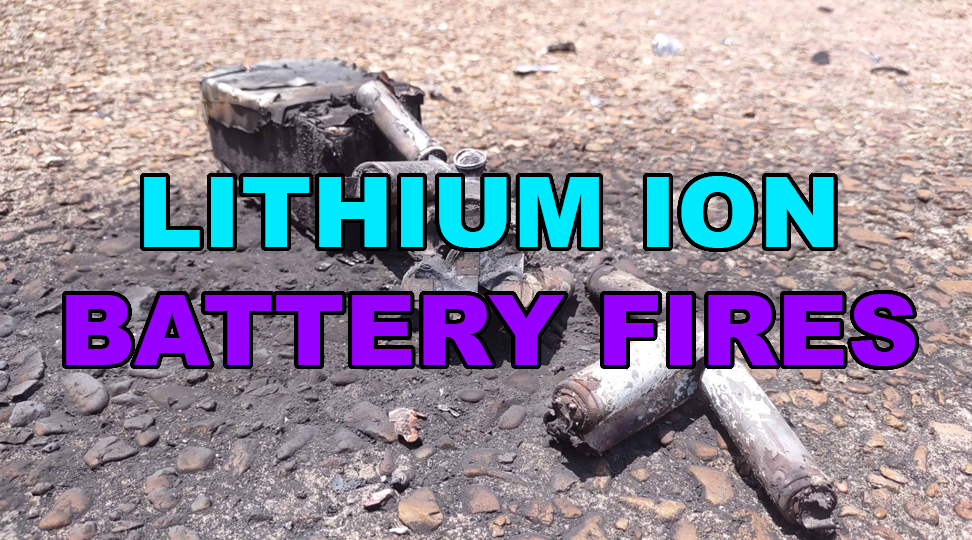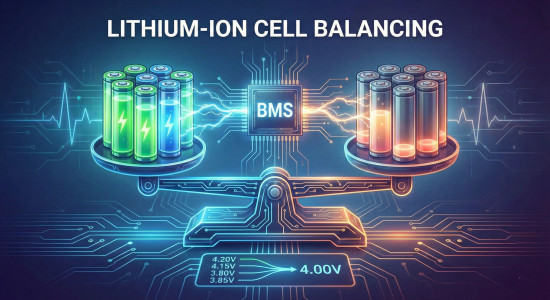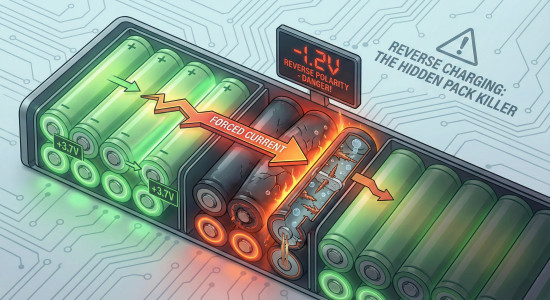
Lithium-Ion Battery Fires: Causes, Prevention, and What to Do if One Happens
Table of Contents
Lithium-ion batteries power phones, laptops, e-bikes, power tools, and even cars. They’re remarkably reliable overall, yet when something goes wrong the consequences can be severe. This article organizes the key points into clear sections, corrects spelling and punctuation, and adds brief clarifications where helpful.
How Common Are Lithium-Ion Battery Fires?
They’re actually extremely uncommon relative to how many batteries are out there in use. But the consequences can be severe. There are billions and billions of lithium-ion cells in the wild, and only a tiny fraction ever have any problems. The risk rises with large batteries for e-bikes, scooters, and electric vehicles and with abuse—either abuse in the manufacturing process by using cheap or low-grade cells, or abuse in use by charging too fast, running a pack at currents it’s not rated for, bypassing safety measures, or letting it overheat in storage.
Think of risk like seatbelts: most drives are uneventful, but the belt matters in the rare crash; likewise, good cells and good habits drastically lower already-low odds.
Where and When Do Lithium-Ion Battery Fires Typically Occur?
Lithium-ion battery fires are extremely rare when compared to how many lithium-ion batteries are in use, but when fires occur, they generally occur in five situations: while they’re charging, while they’re stored in workshops and garages, while they are being shipped, while they’re in waste facilities, and in electric vehicles. Incidents cluster where batteries are concentrated (charging areas, repair benches, warehouses), so organizing these spaces pays off.
Why Charging Is a Common Trigger
When they’re being charged and catch on fire, that’s because they’re being charged with too much current or they have the discharge bypassed on the BMS and they just depleted the battery pack at extreme current levels and did not let it rest before charging it. Another way they can catch on fire when they’re being charged is if they are over-volted. This can happen when you charge the battery through the discharge port of the BMS. The BMS can only cut off charging on the charge port.
So if it’s a separate-port BMS and you’re charging it through the discharge port, the charging process will work just fine, but it won’t be able to cut off charging when the cell voltages get to a certain point. It will just balance out naturally with Ohm’s law, and that means you could easily overcharge a cell to 4.5 or even 5 volts or more, which can cause a fire. Label your charge leads/ports and use chargers matched to the pack’s chemistry and voltage to avoid mix-ups.
Storage, Shipping, and Workshop Risks
When a lithium-ion battery catches fire in a workshop or garage, it’s because they’re not being properly stored, they’re being overheated, or they are easy to tamper with—with exposed terminals in the presence of animals, small children, and things like that. If a lithium-ion battery is sitting on a shelf properly stored, it will never have any kind of problem. It’s not going to catch on fire or suddenly burst into flames. It’s a similar situation when they’re being shipped.
They’re totally safe when packed properly, but when they’re not packed properly and the side of the box is dented or something, if it was some glassware it would just be a bad day. If it was some computer, again, it would just be an inconvenience. But if it’s a battery and it gets dented and totally compromised and the cell gets shorted internally, it’s going to be a really bad day for that person or that truck or, worse, that flight. Insulate terminals, protect against crushing, and keep cells away from conductive items (like tools or loose hardware).
Electric Vehicles and Collision Scenarios
In electric vehicles, collisions are always going to be some percentage of all traffic. Electric vehicles are getting more and more common. This is going to happen more and more often. As a battery gets impacted, there’s really nothing you can do to stop that chain reaction.
That would take either a new battery chemistry that is totally safe when being absolutely ruptured and punctured or some very high-tech, very elaborate armor or cage or otherwise protective structure for the batteries, which is pretty much what they’re doing now. These things do happen. They’re definitely not random, and they are rare. After any significant impact, treat the pack as compromised even if there’s no smoke—keep distance and follow manufacturer/first-responder guidance.
What to Do If a Lithium-Ion Battery Fails or Catches Fire
If you see or hear any swelling, hissing, or popping; have a strong smell; or definitely if you see smoke or there is enough heat to melt plastics or the wrap of the battery, then you need to unplug and immediately power down—if you can do so safely—whatever device is running the battery. Immediately move it outside to a clear area on top of a non-combustible surface like concrete or pavement. If at all possible, try to wrap it in something non-flammable as you pick it up and carry it out. But in the heat of the moment (no pun intended), that might not be viable and might take too much time.
So you may have to carry the battery pack from the safest possible position furthest from the heat or while holding the hot part of the battery away from you as you walk through the house. Once it’s outside somewhere that it can’t burn anything down or hurt anybody, the best thing you can do is just let it run its course. If you try to put water on it or suffocate it in some way with the incorrect tools, you may cause more of a problem than you already have. So if you don’t have the proper equipment to deal with a lithium-ion battery fire, then the best thing you can do is just let it burn out. You don’t have to overreact and immediately call the fire department or anything.
You only need to do that if the situation is out of your control. If fire is spreading or can spread to other parts of the property and you have no way of containing it, then that’s when you need to call emergency services. But if you have a battery that’s on fire on a concrete slab or in your driveway and there’s at least 20 or 30 feet of clearance all the way around, then the worst thing that can happen is a flaming cell could fly a few dozen yards away from the battery and you would want to run over and put that out. It’s a terrible situation to be in, but all in all, it’s pretty containable as long as you can get the battery outside and onto a safe surface. If in doubt, prioritize life safety: clear people and pets, ventilate if smoke is inside, and consider calling emergency services early for guidance.
How to Prevent Lithium-Ion Battery Fires
The first thing is to just buy good stuff. Don’t buy cheap junk. Cheap stuff will always get hotter than nice, high-quality stuff under the same currents in terms of charge or discharge. The second thing is to charge safely. Don’t overcharge it. Charge it with the right voltage and make sure you’re charging it through the charge port if it has a common-port BMS. Keep the battery temperatures between a reasonable level, say somewhere between 0 and 35 °C.
Just because they can run hotter than that doesn’t mean that it’s a good idea for you to do so. As previously stated, it’s important to keep the pack physically safe. So use lots of padding or plastic casing or something like that to keep the battery pack secure from external impacts.
Store them in the proper ways. Don’t store them in a hot garage—they can get up to 120 °F in the middle of the summer—or in some shed in the same or worse conditions. Don’t leave lithium-ion batteries in a car really any time of the year, especially in the summer. And finally, dispose of them correctly. Take them to battery drop-off centers or go down to the landfill and pay the fee that you have to pay for them to take them. Don’t just throw them away. A simple metal tray or concrete paver under your charging area adds a cheap extra layer of protection.
Characteristic of a Lithium-Ion Battery Fire
Thermal runaway is the number one characteristic of a lithium-ion battery fire. A failing cell, as it overheats, triggers its neighbors to overheat, which can cause the temperature to climb rapidly. The signs are hissing or popping; whitish-grayish smoke; a chemical and, believe it or not, somewhat sweet odor; swelling; or rapid heating. And here’s a really good sign that you’re facing a lithium-ion battery fire: jet-like flames. When you see the jet-like flame, you pretty much know for sure what you’re dealing with is a lithium battery fire.
Flammable vapors, gases, and particulates come out of the battery, and with some chemistries oxygen is even released from the cathode. So that means these things will burn underwater. That makes re-ignition likely if you try to put these out with water and you don’t really know what kind of lithium-ion battery you’re dealing with. Treat any off-gassing as hazardous—avoid breathing the plume and increase distance fast.
Likelihood and Contributing Factors
For a quality consumer device that’s used as directed, the chance is very low over the entire lifetime of that device. The likelihood increases as the number of cells in the battery pack increases or as the battery packs become very old or physically damaged or exposed to water. Also, if they’re stored in hot devices—think of iPads and things that are left in cars or in hot trunks during August’s blazing heat—or using incompatible or cheap chargers that don’t provide the right voltage levels or charge them faster than they’re intended to be charged.
Overall, light electric vehicles like e-scooters and bikes are dominating recent incident totals in many cities because of the recent popularity of these devices and the recent influx of battery builders on the open market. All in all, you can pretty much be guaranteed to not deal with a lithium battery fire. If it does happen, that will be the exception, not the rule. As packs age, reduce stress: slower charging and gentler storage conditions help.
What Causes Lithium-Ion Batteries to Catch Fire?
A simple list of what causes batteries to catch on fire would be internal defects, physical damage, electrical abuse, thermal stress, and water intrusion. Most failures trace back to one of these buckets, even if the exact trigger isn’t obvious in the moment.
Will a CO₂ Extinguisher Put Out a Lithium-Ion Battery Fire?
The answer is usually no. CO₂ displaces oxygen but doesn’t cool the cells, so the fire often reignites. So basically the only advantage you get from using a CO₂ fire extinguisher isn’t its fire-extinguishing capabilities, but it’s just blowing on it with air that’s not oxygenated. If it’s all you have, you can use it to briefly knock down the flames. But you probably still need a lot of water to cool the pack, but you don’t know what kind of chemistry it is and adding water might really hurt the situation.
So really you want to suffocate it. If it’s inside and you cannot get it outside—it’s either too heavy, it’s burned into something, or it’s just too hot—it’s probably past the point of being able to carry it at all or touch it. Well, then you have to suffocate it with something non-flammable and non-porous, and then wet the surface of that after many layers to reduce the temperature and enhance evaporation, but don’t just pour water onto it. Keep a Class ABC extinguisher handy for spot fires around the device (curtains, carpet) even if it won’t stop the battery itself.
Final Thoughts
These events are definitely not random, and they are rare. Buy quality gear, charge and store it sensibly, protect packs from damage, and dispose of them properly. If a failure happens, move fast, create space, and prioritize safety. A little planning—a clear outdoor spot, labeled chargers, and a tidy charging area—turns a bad day into a manageable one.


